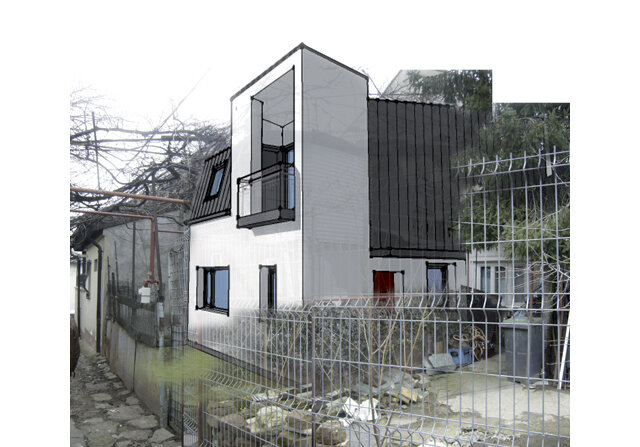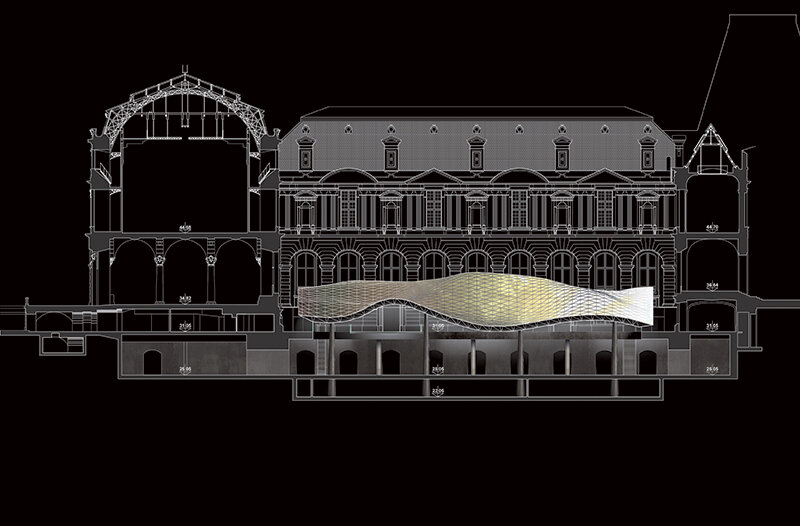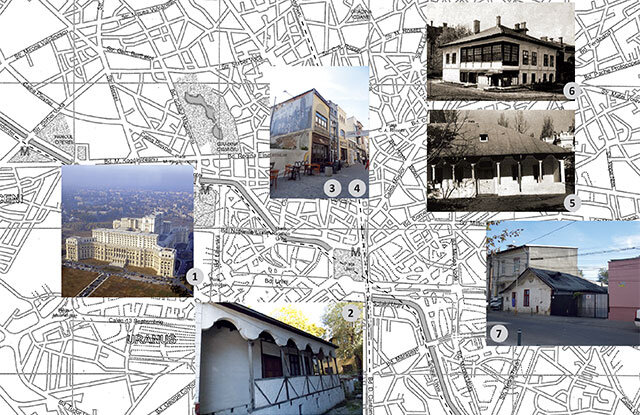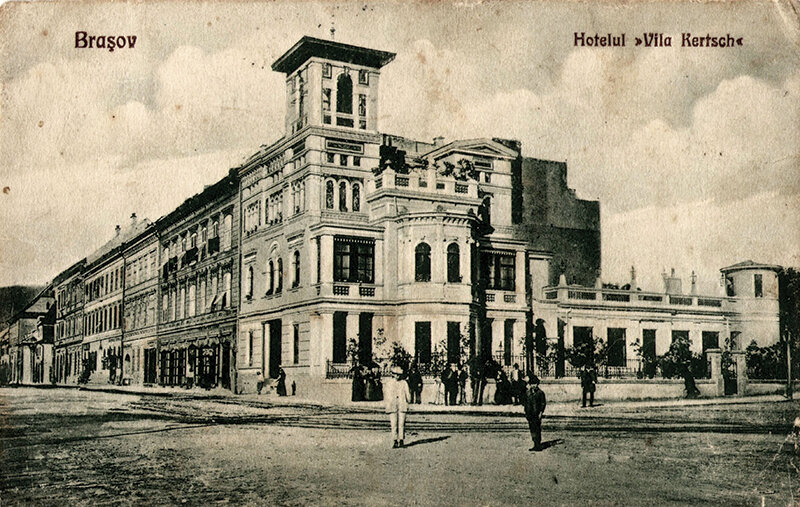
Derogatory town planning
The Romanian Order of Architects is opposed to the amendments proposed in the Romanian Parliament in order to modify the draft law on the approval of GEO no. 7/2011 for the amendment and completion of Law no. 350/2001, on territorial planning and urbanism. OAR considers that the amendments proposed in the Committee for Public Administration, Spatial Planning and Ecological Balance of the Chamber of Deputies turn the legislation on urban planning back to 2008, when substantial derogations from the character of an area regulated by the general urban plan were allowed. The situation prior to 2008 caused great damage to property rights by not complying with the provisions of the PUG adopted by local councils and, as a result, creating territorial imbalances. It has also led to the incoherent development of the city, the alteration of the image of the localities and the aggression of protected areas, overloading of infrastructure, and uncertainty of investment. The OAR points out the absence of professional foundations (studies, statistics) and the failure to comply with the European principles of sustainable territorial and urban development to which Romania has adhered. These amendments were put to the vote by the Commission at the sitting of October 9 this year, for lack of quorum. The reasons given by the initiators of the amendments were the considerable age of the urban planning regulations and the desire to attract investors. Enacting these changes will encourage real estate speculation and weaken the role of the administration. A real reinvigoration of the real estate market takes place by increasing the quality of the built environment and strengthening the role of public administration. The OAR protests against the resulting form of GEO 7/2011, in the absence of public consultation within the profession, with the institutions regulating the field or with civil society. It also calls on the President of Romania to carefully analyze the arguments put forward by professionals against the proposed amendments and to send the law back to Parliament for debate.
Amendments proposed by committee members rejected by the OHR
The Committee of the Chamber of Deputies adopted an amendment on the possibility of increased CUT exemptions in certain areas of the city. Art. 32, para (8) - "The provisions of para. (7) relating to the CUT shall not apply to PUZs intended for areas of economic interest, i.e. the establishment of industrial parks, technology parks, superstores, hypermarkets, hypermarkets, business parks, service areas and the like".
By listing these situations, almost any locality could be subject to such derogations. The amendment uses terms not defined by the law (technology parks, business parks), and over-generalizes it by the term 'other such as'. It should be noted that not just any superstore or office building development should be considered an objective for the city that justifies an unlimited CUT waiver. We understand the need for some state-owned areas (military units that are no longer in use), regulated by outdated urban plans with low urban indicators, to be covered by such a derogation under the new conditions, which aim to absorb European funds for the realization of public utility objectives. The OAR proposes that the provisions of such an article (based on the 'public interest' and not on a vague 'economic interest') should only enter into force after the publication of Methodological Rules establishing its applicability.
On the other hand, the importance of the strategic vision over the public interest has been diminished by the MEPs by repealing Art. VI of GEO 7/2011. This provided that local public administration authorities, with the support of the Technical Commission for Spatial Planning and Urbanism, should identify the areas for which zonal urban plans will be drawn up according to the law, in relation to the development strategy and investment plans.
The article was all the more necessary in the case of localities with outdated general urban development plans, invoked as a need to legislate derogations. The Commission decided that unapproved urban development plans containing derogations that could no longer be accepted under GEO 7/2011 and for which it had set a grace period of one year from its publication, during which they could be adopted by local councils, could still be approved.
This provision is contrary to the reasons given by the Ministry of Regional Development and Tourism, which made it necessary to adopt the GEO. We consider that this, together with the addition of Art. II of the GEO, "the reconfirmation of expired permits to be done at the construction authorization stage", will lead to destabilizing the development of cities and to the insecurity of investors, who will make decisions based on permits that they may belatedly find out are no longer valid.
While often citing the lack of current PUGs, MEPs have extended the deadline for localities to approve a PUG after the expiry of the validity of such documentation (10 years) from two to five years. The situation where localities exceed this deadline has remained without sanctions for the public administration responsible for the delay. The case in which the ordinance allows, when a request is made to amend the provisions of urban planning documents, the preparation of the technical documentation for the building permit, without requiring the preparation of an urban planning document, has been generalized by the Commission, which we consider inappropriate. According to the GEO, this was possible for 'pre-existing continuous built frontages' where the buildings on adjacent plots have the same height. The OAR requested that the POT and CUT be added to the height regime. The Commission rejected the proposal and considered it appropriate to delete the description of the "continuous pre-existing built frontage" (Art. 32, paragraph (1), letter e).
The Commission of the Chamber of Deputies has decided that the County/Municipal Directorates of Culture shall represent the Ministry of Culture in the endorsement of urban planning documents concerning historical monuments and their protection areas (modification of the current numbers82, 10, 12 and122 of Annex 1). At the moment, the decision regarding monuments of group "B" (local value) is taken by the county directorates, but the decision regarding monuments of national value is taken by the specialized directorate of the MCPN. Despite the existence of a letter from the Ministry of Culture explaining the situation and the opposition of the ROA, the committee adopted the amendment.
Another cause for concern is the removal from the same annex of the areas of protection of historical monuments (thus, the bodies that approve the intervention in the areas of protection are no longer explicit) or the replacement of this expression with the more vague "areas comprising monuments, ensembles or sites inscribed on the List of Historical Monuments". According to the amendments to Annex 1, the opinion of the Ministry of Regional Development and Tourism is no longer required for the approval of urban planning documents for protected areas (it should be understood that this also applies to protected areas of historic monuments that are part of the World Heritage List, although the provisions of OG 47/2000 have not been repealed).
A significant number of urban development plans were approved in the absence of a protected built-up area or a protected area of a historical monument, even though it existed. Given the fact that this omission, in some cases, was made together with the lack of an expert opinion and had consequences for the objectives that should have been protected, the RFO proposed that the absence of a protected area should invalidate the procedure for approving the urban planning documentation. The amendment was rejected.
Amendments proposed by the OHR, rejected by the Public Administration Committee
PUZs should be drawn up for an area that includes at least the entire territorial unit of reference (u.t.r.) in which the land on which they are based is located. The HRO's proposal eliminates the zonal urban plan for a single plot, an anomaly that has generated urban chaos. This would strengthen the public authority's power to manage the territory and, by applying the provisions of the current regulation on public consultation, it would ensure the coherent and equitable development of an entire section of the city and a reduction in the number of legal actions concerning urban plans.
The Commission's decision will have a negative impact on cities, particularly in areas of high architectural quality, and will eventually lead to a decrease in the market value of the areas where intervention will be made. This effect will be reinforced by the significant proportion that can be obtained as a derogation from the maximum CUT regulated by the previous urban planning documentation (20%). Protected built-up areas are not exempt from the possibility of realizing PUZs that derogate by 20% from the maximum CUT (Art. 32, para. 10). The reason given by the Commission for formulating this derogation was that it seeks to solve the problem of extensions to existing buildings. The OAR considers that for such cases the derogations of 20% of the maximum regulated CUT are overestimated, a more realistic figure being 10%.
Another proposal of the OAR that was rejected was to keep the definition of OUG 7/2011 of Detailed Urban Development Plans.
The Commission of the Chamber of Deputies has introduced the possibility for this urban planning instrument to change the POT unlimitedly (Art. 48, paragraph 2). We believe that the agglomeration of punctual, uncorrelated changes of the POT in an area will lead to a decrease in living conditions in the whole area and to a decrease in its economic value. Significant changes in the POT on one parcel will certainly create discomfort for neighbors.
Keeping "the boundaries of the easements proposed to be established" among the requirements of the Notice of Appropriateness (Art. 32, para. 3, lit. b).
Exclusion of Protected Built-up Areas for which a technical regime of constructions subject to authorization has been defined in order to protect the architectural and urban heritage from the areas in which PUDs may be rea-lized. Maintaining in the definition of the urban planning opinion the characteristic: "incorporates and correlates the points of view of the competent advisory institutions" [Art. 37, para.13]. Requiring a report on the implementation of the PUG and the need for updating every five years. Strengthening the role of the Prefect's Institution, the State Building Inspectorate and associations and foundations active in the field, in challenging in court the urban plans approved in breach of the law.
Increase the fine for the approval of an urban plan with exceptions not provided for by law, in proportion to the size of the illegal exception.


















